Newsletter: Essential Arts: Where have all the playgoers gone?
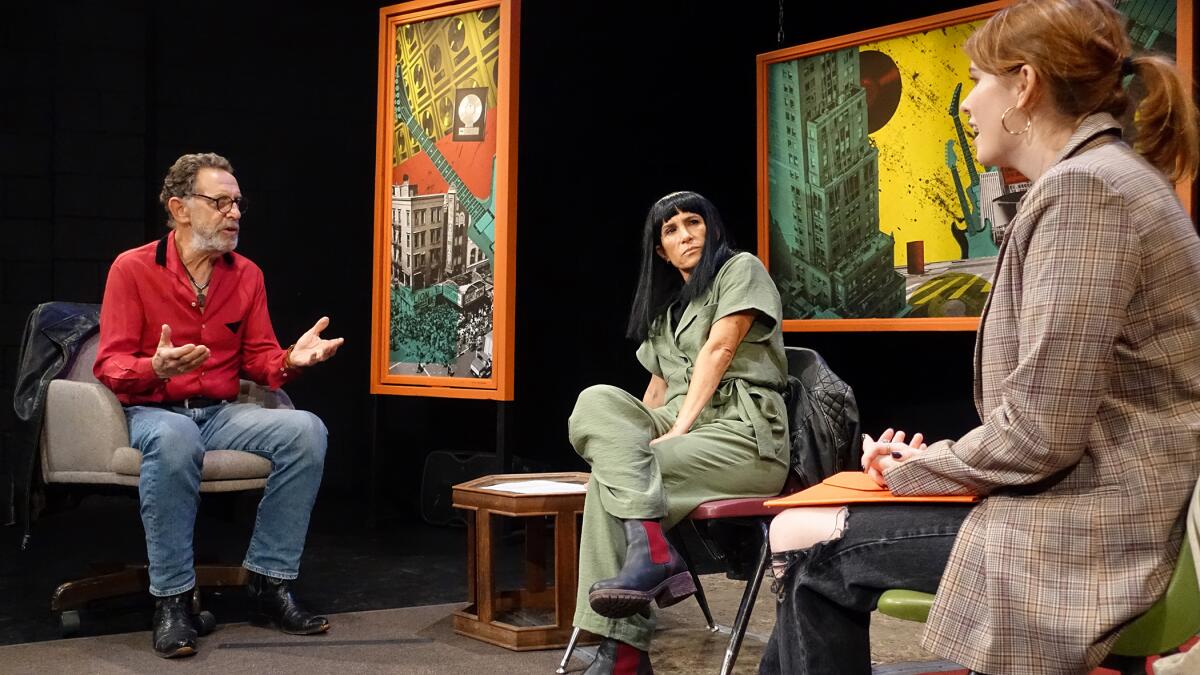
Good morning. Iâm Times theater critic Charles McNulty, with Times arts reporter Steven Vargas standing by. Together weâll be attempting to fill the fabulous shoes of Carolina A. Miranda, who has a reprieve from her newsletter duties this week. Before Steven reviews the latest arts news, I want to address an urgent issue facing theater companies â dwindling audiences. The venues are open, but so too are whole rows of seats â a disheartening sight for ambitious, meaningful work.
Jessica Goldberg pulls off a neat trick in âBabe,â her new play about an overdue cultural reckoning in the music business. But if only a small number of theatergoers witness the sleight-of-hand, has the magic really happened?
In the all-out war between Gus, an old-school record-label boss immune to sensitivity training, and Kaitlin, a newly hired young employee who is as ambitious as she is politically combative, Abigail, Gusâ right hand, seems at first to be a self-effacing bystander. But as hostilities intensify at the office, she grows in emotional stature. This enigmatic lieutenant who doesnât say much at meetings suddenly has a lot to say â and none of it fits anyone elseâs ideological agenda.
The transformation of a subordinate character into the playâs protagonist left me gobsmacked. But was anyone else marveling at this dramatic coup? At the sparsely attended Atwater Village Theatre, where âBabeâ is having its world premiere courtesy of the Echo Theater Company, the play seemed in danger of echoing into a void.
Intimate theater companies like the Echo serve a niche audience. Attendance is limited by design. But the smallness of these venues makes the growing sections of empty seats all the more apparent. Where have all the committed playgoers gone?
Among the pandemicâs many casualties is the steady diet of theater. The pool of patrons who turn out not just for hits but also for entire seasons has conspicuously dwindled, throwing into doubt the future of companies that have long been working against the odds to forge vital local connections to the art form.
âBabeâ is one of those modest new plays easily overlooked by consumers drawn to celebrity, hype and lavish spectacle. Awards committees will likely turn their attention elsewhere when deciding the yearâs prizes. But attention should nonetheless be paid.
Goldberg emerged off-Broadway at the turn of the century with plays, such as âRefugeâ and âGood Thing,â that intriguingly mix gritty realism with poetic mystery. A distinctive dramatic voice, with subtle traces of Sam Shepard and MarĂa Irene FornĂŠs, announced itself. But a playwriting career isnât easy to sustain, and Goldberg inevitably moved into television.
Echo Theater Company artistic director Chris Fields, who directed âBabe,â has been a champion of Goldbergâs work. (âBody Politicâ and âBetterâ both received Echo premieres.) A long-term relationship with a dramatist is healthy for artists and audiences alike. Theater doesnât have to be as transactional as dining out. Buying a ticket can be an investment in something larger than an eveningâs entertainment.
The structure of âBabeâ isnât perfectly calibrated. The play, rushed in places, is still germinating. Plot isnât Goldbergâs strong suit. Oblique character observations, the curious rhythms of relationships that defy category, and an agile empathy too alert for sentimentality are her trademark strengths.
These virtues are embodied in the deeply moving performance of Julie Dretzinâs Abigail, whoâs caught between the rock of Gusâ retrograde masculinity and the hard place of Kaitlinâs revolutionary fury. As the acrimony ratchets up between these antagonists, Abigail refuses to let anyone rewrite her story for their own ends.
Sal Viscusoâs Gus has grand arias of male toxicity that he delivers with savage aplomb. Wylie Anderson has the challenge of being doubly cast as the aggrieved and increasingly aggressive Kaitlin and as Kat Wonder, the legendary female recording artist who was romantically linked with Abigail and came to a tragic end.
âBabeâ offers the pleasure of a theatrical novella. In a mere 70 minutes, whole lifetimes are intimated and reassessed as the contradictions inherent in the term âmusic businessâ are teased out. The play makes a case for the capacious vision of art in an age dominated by the restricted views of commerce and politics. But is there public bandwidth left for this kind of small-scale theatrical meditation?
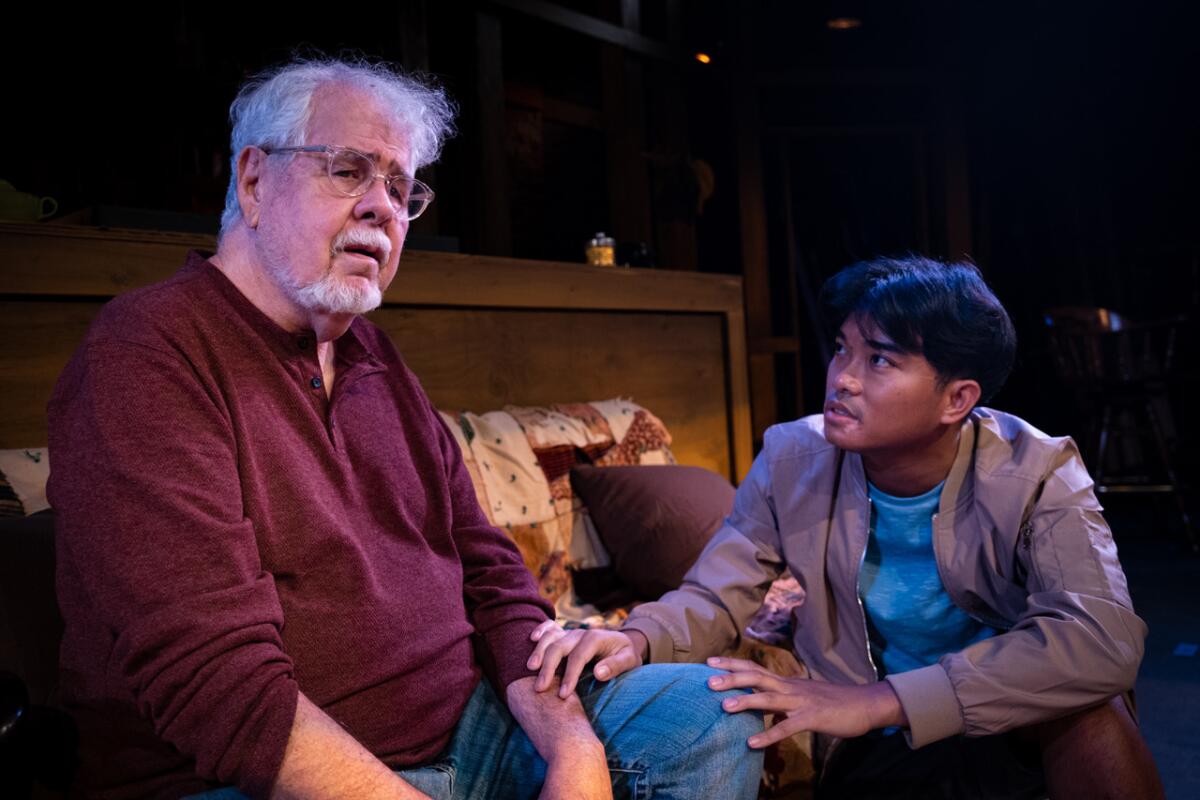
The Southern California premiere of Samuel D. Hunterâs âA Great Wilderness,â produced by Rogue Machine Theatre at the Matrix Theatre, is similarly struggling for notice. I have mixed feelings about this 2014 play about gay conversion therapy. Hunter also wrote âThe Whale,â which has been adapted into a highly anticipated film set for wider release later this fall.
âA Great Wildernessâ takes a complexly sympathetic view toward Walt, the avuncular protagonist who is trying to convert one last youngster before he gives up his operation in rural Idaho and moves to an assisted living facility to deal with his incipient memory loss. A father still grieving the death of his own son, who died by suicide after coming out, Walt is haunted by doubts about the legacy of his counseling center, which he has asked his ex-wife to continue.
The problem with the play isnât the surprisingly gentle angle from a gay playwright on a controversial subject but the workâs lack of structural focus. Hunter canât seem to find a sustainable dramatic throughline, and Elina de Santosâ unsubtle direction compounds the sense of dithering.
John Perrin Flynn, founding artistic director of Rogue Machine, plays Walt, marking his return to the stage in a lead role after years of concentrating on directing and producing. His grief-flecked performance, shadowed with misgivings and shot through with worry, strikes the productionâs deepest chord, though itâs not enough to rescue the work.
Rogue Machine has produced other plays by Hunter, including âA Bright New Boise,â âA Permanent Imageâ and âPocatello.â I was grateful for the opportunity to encounter âA Great Wilderness,â despite my reservations. But there doesnât seem to be a rush to catch this play by one of our leading contemporary dramatists.
In a Facebook post, Flynn sent out an SOS: âIf you think art theaters are important to this culture, this nation, this state, this city, you have to support them. If you think Rogue Machine is an important part of the cultural community of Los Angeles, you have to buy a ticket. Now. Today. It is this simple. Theaters should only exist if they have an audience. Buy a ticket and come or donât buy a ticket and donât come. Either choice helps answer the question.â

Desperate times call for desperate measures. Pasadena Playhouse has been struggling to bring in an audience for Martyna Majokâs âSanctuary City,â which I consider to be one of the best productions of the season. A free-ticket initiative was put into effect for the last two weeks of the showâs run, which ends Sunday.
Why are audiences so reluctant to resume their theatergoing ways? Itâs obviously not just about COVID. Our tolerance for inconvenience has taken a hit after the unrelenting stress of the last few years. Traffic, ticket prices, parking and, yes, masks make it easier to succumb to domestic passivity. Surfeited with choice at home, we have trouble committing to anything that requires a little exertion.
As my colleague Jessica Gelt has reported, L.A. theaters are dealing with unprecedented challenges. But these companies donât always make it easy on themselves. Once again operating in a vacuum, many of the more prominent venues opted for the same two weeks in September to open their fall productions. In a media environment in which theater coverage has been drastically curtailed, this makes no tactical sense.
I have my own pet peeves. Theaters should start their shows on time and not make masked patrons wait 20 minutes for the curtain to go up (as Pasadena Playhouse is in the habit of doing on opening nights). And price gouging at parking structures is just another reason for a younger demographic to stay away.
But the value of playgoing goes beyond the merits of an individual work. To see a show is to be part of a community. To buy a ticket is to assert what you think matters in the world. To leave your home for a cultural experience is an expression of openness â to seeing more, feeling more and, quite possibly, understanding more.
And now Iâll turn things over to Steven Vargas, who will provide an expert rundown of our cultural coverage in the last week.
On and off the stage
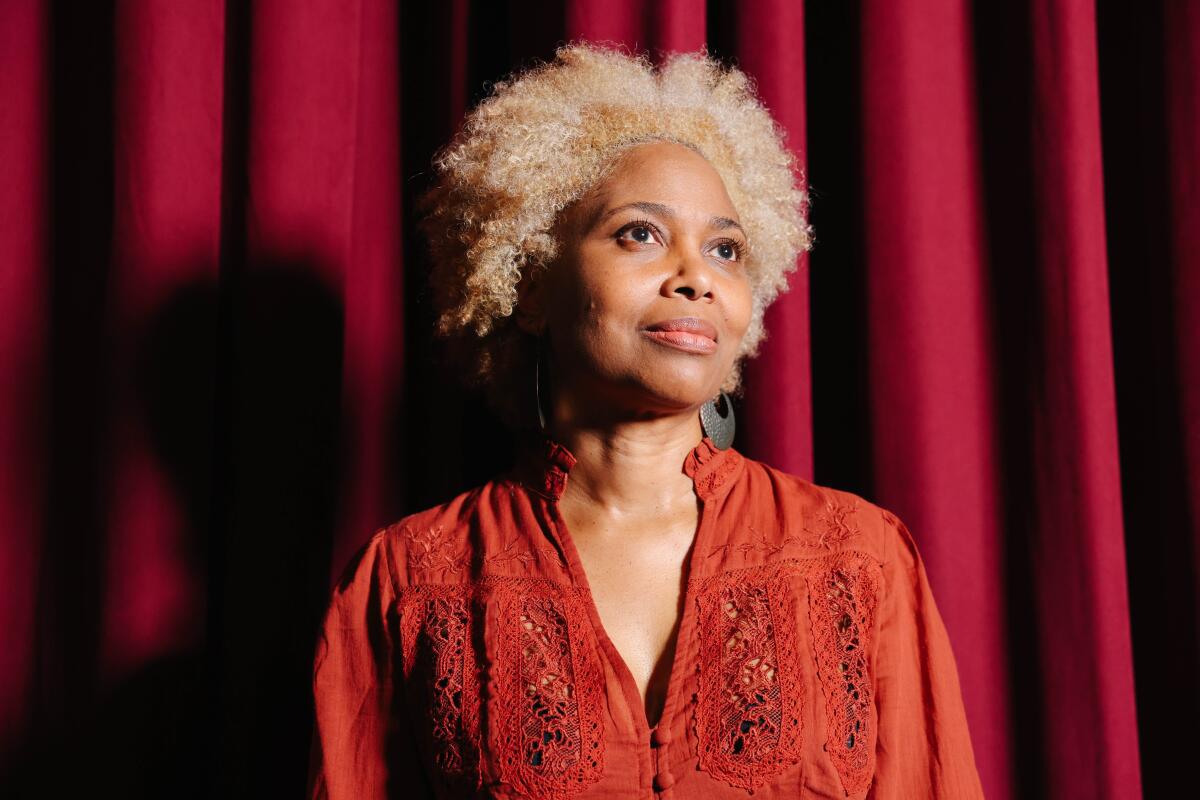
Thanks for the introduction, Charles! Naturally, Iâll keep the theater conversation going and start off The Timesâ reporting roundup with a story I had the opportunity to cover this week:
Inda Craig-GalvĂĄn â a playwright known for works like âBlack Super Hero Magic Mamaâ â took on a new challenge: writing a leading character outside of her own race. In her new play with East West Players, âThe Great Jheri Curl Debate,â Mr. Kim (Ryun Yu) hires Veralynn Jackson (Julanne Chidi Hill) at his beauty supply store under one condition: He calls her âJulie.â Taking on the project for East West Playersâ Playwrights Group meant Craig-GalvĂĄn had to navigate stereotypes while thinking empathetically and collaboratively with all involved. âShe didnât want to offend, exploit, appropriate â any of that,â Dramaturg and Playwrights Group instructor Alice Tuan told me. âThatâs the scary thing about writing outside of your race, and thatâs why not a lot of people do it.â
In his review of âThe Search for Signs of Intelligent Life in the Universeâ at the Mark Taper Forum, Times theater critic Charles McNulty notes that the Center Theatre Groupâs revival of Jane Wagnerâs one-woman show â starring âSaturday Night Liveâ comedian Cecily Strong â doesnât quite hit the mark. The iconic role was written by Wagner for Lily Tomlin, who premiered it on Broadway in 1985. âA theatrical garment custom made for one performer is never going to fit another quite as well, no matter how extensive the alterations,â McNulty writes. The play weaves together outlandish characters, notably a bag lady named Trudy who lost her mind and comes to believe sheâs contacted space aliens.
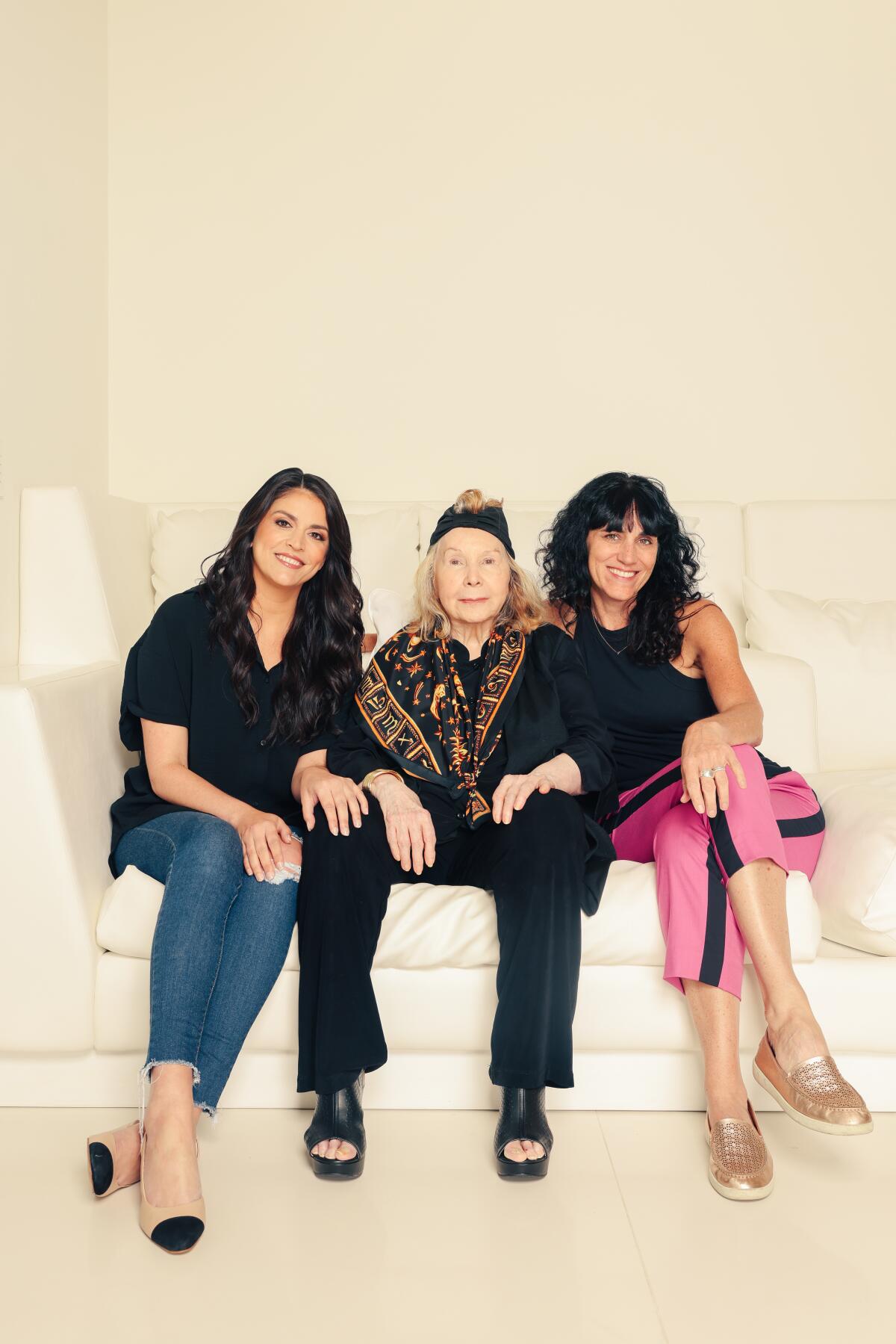
And Times arts and culture writer Jessica Gelt sat down with Strong, director Leigh Silverman and Wagner to talk about why theyâre reviving the show today.
The museums and gallery scene

Times contributor Christina Catherine Martinez dips into Tita Cicognaniâs new work at the Hammer Museum, âHeart Tubâ â a hot tub installation that visitors can soak in, both literally and artistically, for 45 minutes at a time. Cicognaniâs work is accompanied by the 40-minute video âI Still Believeâ looping on a large screen. Visitors can challenge their ideas of what it means to be in a museum â typically associated with cleanliness and sterility â and embrace the intimacy of a hot tub. âWhat began as an overdetermined catalyst for romance has since devolved into a symbol of tackiness (see: âFailureâ),â Martinez writes. âBut loving is nothing if not embarrassing, its expressions always a little infra dig.â Martinez got submerged into a conversation with Cicognani and into the water, at one point almost soaking her reporterâs notebook â oops!
Thirty-five years after the little Newport Harbor Art Museum in Orange County announced plans to relocate, its aspirations came to fruition â the new $93-million, 53,000-square-foot Orange County Museum of Art designed by Morphosis is set to open today. So was the wait worth it? Times art critic Christopher Knight provides a look inside the museum doors and a gander at its three inaugural exhibitions. Spoiler alert: plenty of art with little opportunity to sit and ruminate.
And Times arts and culture writer Deborah Vankin attended the art museumâs gala to capture the âutopian black tieâ affair that marked the opening â providing a glimpse into the fashion and artists of the night.
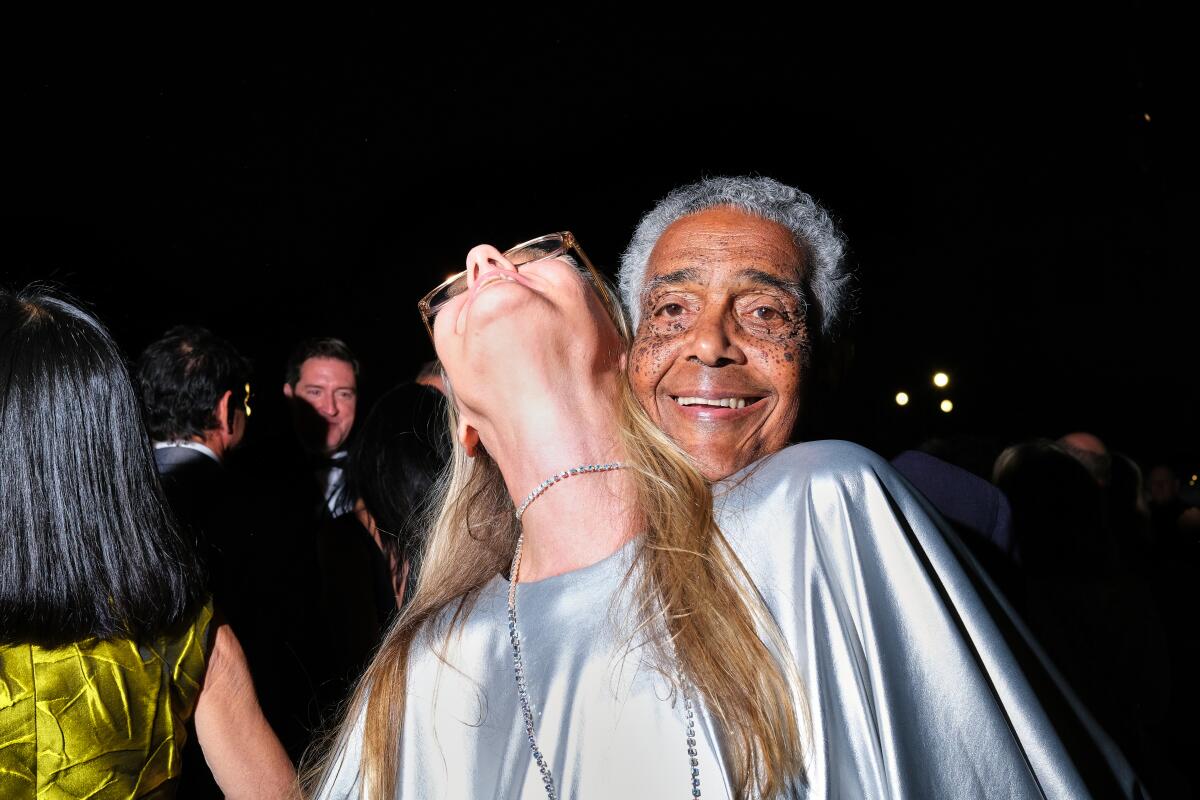
A quick update on last weekâs newsletter: Due to a tech glitch, last weekâs email featured an art review from 2018 that stated that an exhibition by Jo Ann Callis at Rose Gallery in Santa Monica was ongoing. That show is not currently on view. Instead, the gallery is exhibiting a show of work by photographer Caleb Stein titled âDown by the Hudson.â We regret the error!
Enjoying this newsletter? Consider subscribing to the Los Angeles Times
Your support helps us deliver the news that matters most. Become a subscriber.
Classical notes
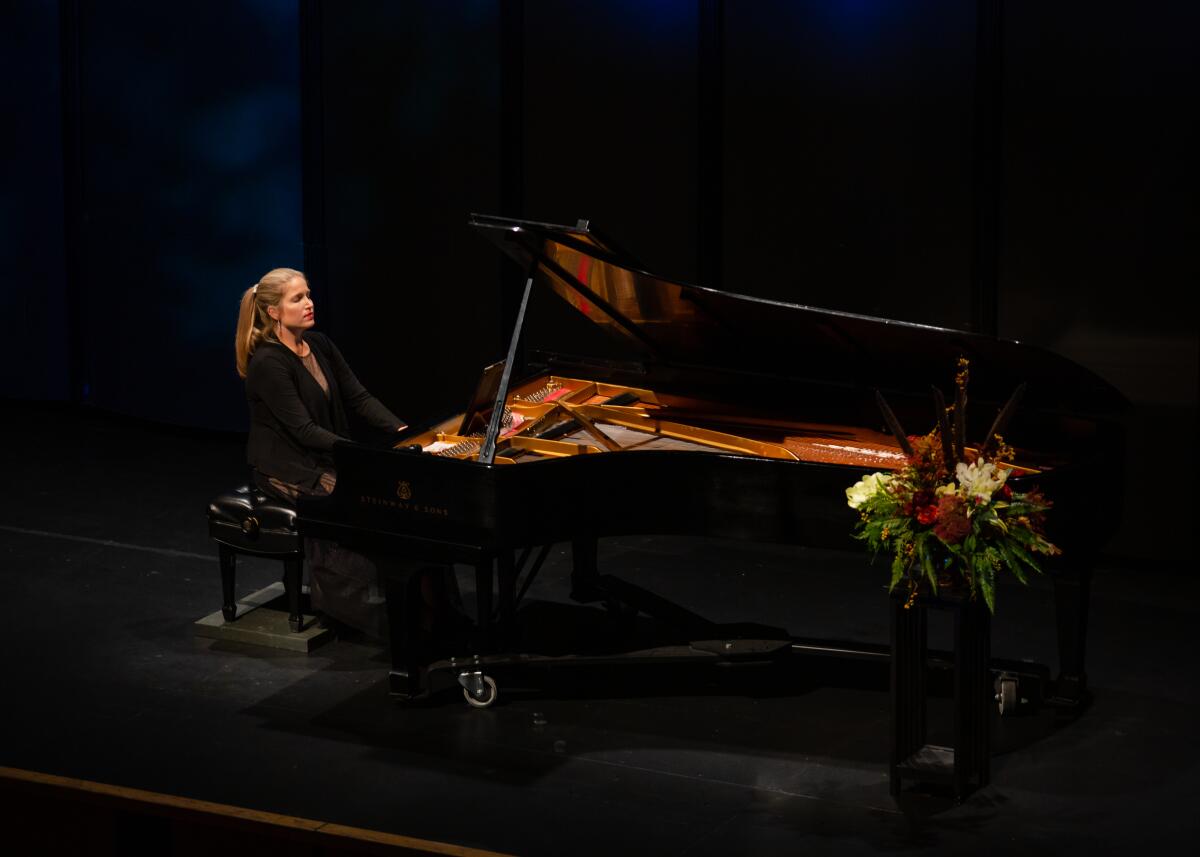
What does it mean to be Pan-American? Times classical music critic Mark Swed writes that the L.A. Philâs Pan-American Music Initiative, led by Gustavo Dudamel, probed the idea in a compelling way at a recent concert. Venezuelan pianist Gabriela Martinez struck a chord on the question during her recent performance at the Eli and Edythe Broad Stage as well. âMelody in all three of these pieces needs to be assembled a note at a time,â Swed writes of Martinezâs performances of new work. âMartinez did so by providing such substance to each individual note that she gave the impression of capturing it from the air, like a flying insect, and attaching it to the piano so that it could join the next one.â
L.A. Operaâs new resident conductor, Lina GonzĂĄlez-Granados, received a warm welcome from opera fans last month, writes contributor Catherine Womack, when she made her debut at the Dorothy Chandler Pavilion conducting Donizettiâs âLucia di Lammermoor.â (The opera closes this weekend.) Hailing from CalĂ, Colombia, GonzĂĄlez-Granados was surrounded by music and dance growing up, and gravitated toward opera recordings in addition to classical piano lessons. At the behest of her mother, GonzĂĄlez-Granados learned Colombian and other Latin American tunes on the keys. âI wanted to focus on classical because I needed the technique,â she tells Womack. âMy mom was like, âYou need to know your roots.ââ
Moves
Daniela Lieja Quintanar, previously the chief curator and director of programming at Los Angeles Contemporary Exhibitions, was appointed chief curator and deputy director of programs at REDCAT.
The Wallis named violinist Artem Kolesov as its inaugural artist for the Walter and Peggy Grauman Fellowship in Classical Music.
Hero Theatre announced two new play commissions: PhanĂŠsia Pharel will develop a play for the companyâs âNuestro Planetaâ initiative and Amina Henry riffs on Shakespeareâs âMuch Ado About Nothingâ in âNothing, Nothing.â
Tony nominees Dee Dee Bridgewater and Delroy Lindo have been slated as co-hosts for the inaugural Jazz Music Awards on Oct. 22.
Berkeley Repertory Theatreâs the Ground Floor is kicking off its 10th anniversary by announcing the 20 projects that will be part of its upcoming Residency Lab, which also marks the programâs return to full capacity since the start of the pandemic. Projects include Monica Bill Barnes and Robbie Saenz de Viteriâs âMany Happy Returns,â Minita Gandhiâs âNerveâ and Franky D. Gonzalezâs âHeart Stop, or The Obesity Play.â
Passages
Charles Fuller, a Pulitzer Prize-winning playwright best known for âA Soldierâs Play,â has died at 83. His acclaimed work explored the pervasiveness of racism in social institutions.
Dan Sullivan, Los Angeles Times theater critic from 1969 to 1991, has died at 86. He was also the director of the Eugene OâNeill National Critics Institute from 1999 to 2013.
Kim Jung Gi, a renowned illustrator who has contributed to graphic novels, Marvel and DC comics, has died at 47. Heâs remembered for his ability to draw detailed illustrations straight from memory, and he held the Guinness World Record for the longest drawing by an individual.
Sacheen Littlefeather, the Apache activist and actress known for turning down the best actor award on behalf of Marlon Brando at the 1973 Oscars, has died at 75. On Aug. 15, the Academy of Motion Pictures Arts and Sciences issued an apology for the jeers and mistreatment she received from her act of protest against the stereotypes of Native Americans in entertainment.
Meredith Tax, an activist and writer of second-wave feminism, has died at 80. Her 1970 pamphlet, âWoman and Her Mind,â became a prominent piece of second-wave feminism that investigated gender norms and the behavior of men and women. Other notable writings include her nonfiction âThe Rising of the Women,â the novel âRivington Streetâ and its sequel, âUnion Square.â
In other news
â Christieâs and Highsnobietyâs latest collab, a $125 sweater with âArt Dealerâ printed over the chest, is costing them more than theyâre selling it for. After receiving criticism for âaestheticizing art handlersâ laborâ and workersâ complaints of low pay, the company has taken down its controversial merchandise.
â Surprising news from my hometown: A former KKK headquarters in Fort Worth, Texas, that was set to be demolished was picked up by Adam W. McKinney, a dance professor at TCU College of Fine Arts, and his partner, Daniel Banks, to be transformed into the Fred Rouse Center for Arts and Community Healing.
â Hyperallergicâs Elaine Velie investigates the Art Institute of Chicagoâs quiet changes to Felix Gonzalez-Torresâ âUntitled (Portrait of Ross in L.A.)â over the years, revealing how the mention of AIDS was omitted from the museum label.
â President Biden signed an executive order that reinstated the Presidentâs Committee on the Arts and Humanities, an entity that dissolved during Donald Trumpâs presidency as an act of protest.
â Art writer Mark Lamster explores the timeliness of the Kimball Art Museumâs architecture to commemorate the Dallas museumâs 50th anniversary.
â An interesting read: Deborah Nicholls-Leeâs deep dive into the meaning and impact the color black has had in fashion, for BBC.
â An art collective consisting of formerly incarcerated artists, born out of the Fairton Federal Correctional Institution in south New Jersey, is making waves in the art world, with plenty of stories to tell about how the collective came to be.
And last but not least ...
I am here for online memes of the Try Guys trying to set the record straight after Ned tried infidelity. (And Eugene absolutely serving in the middle of it all.)
The biggest entertainment stories
Get our big stories about Hollywood, film, television, music, arts, culture and more right in your inbox as soon as they publish.
You may occasionally receive promotional content from the Los Angeles Times.





